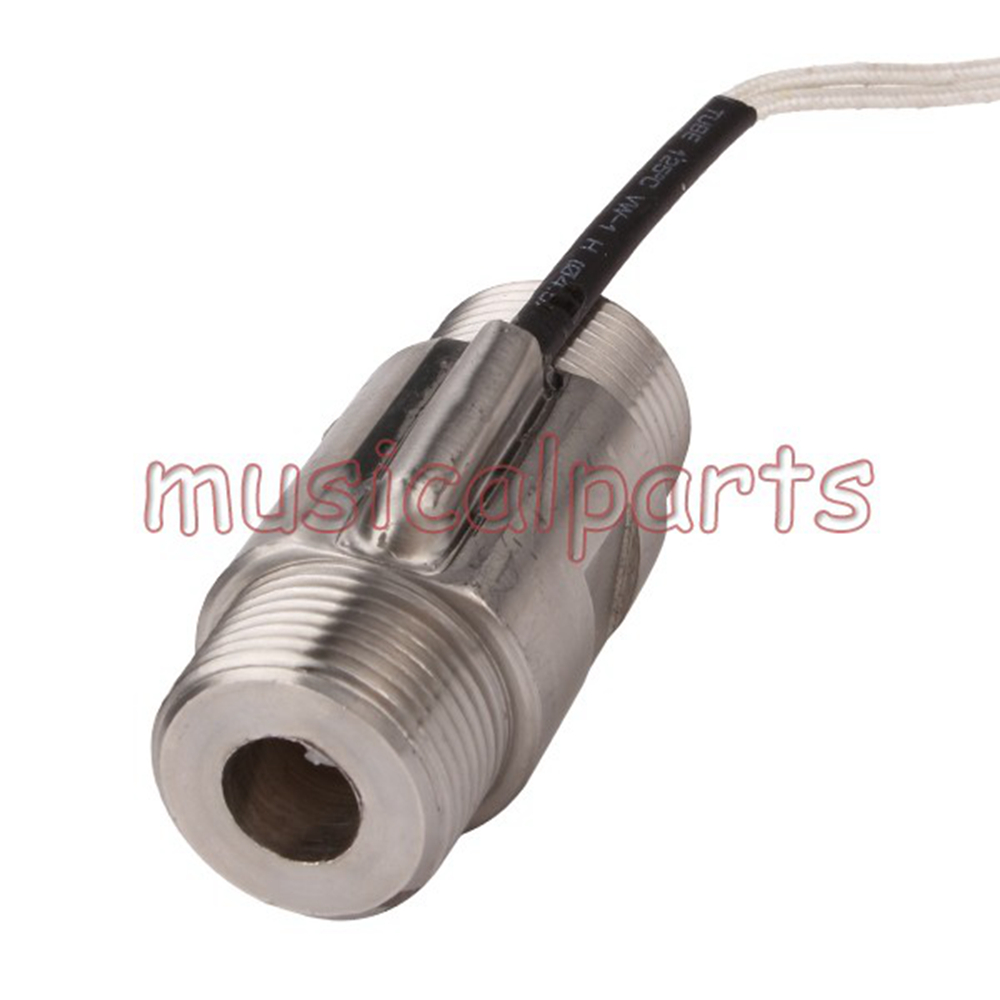Currently, I'm in the process of building a compact three tier brewing system with a single pump and a RIMS for mashing.

To sparge I use gravity. Thanks Earth. The top kettle doubles as an HLT and Boil Kettle. I use the bottom kettle as a grant/HLT.
During my over analysis of building a RIMS setup I decided to start a thread to learn how to brew safer (I'm not saying your system isn't safe!) with a RIMS tube, limit grain bed compaction and improve efficiency.
If you have used any of the following options we'd (the royal we'd) love to hear about successes/failures/opinions. With that being said, yes I've heard of rice hulls! I work for a homebrew shop, so they are off the list.
The four main things I've researched so far are:
1. Liquid Flow Switch
http://www.gemssensors.com/Products/Flow/Flow-Switches/Piston/Alloy/FS-10798-Series-Flow-Switch

These are adjustable from .5gpm to 40gpm and are placed after the RIMS outlet to shut off the heating element if flow falls below set level.
2. Liquid Flow Meter (aka Rotameter)
http://blue-white.com/blue-white-products/?filter_choose-by-product-type=76

Blichmann uses these in their tower of power setup. They are made of polysulphone bodies and poly or stainless fittings (handle heat up to 212). Can be used to set flow from mash tun during re-circulation AND sparge. Oh and will also double as a sight glass

(though obviously not as sexy). I believe they make these that can sound alarms if flow rate drops. Blichmann has one but that is either custom or I haven't found it yet.
3. Liquid Filled Vacuum Gauge
http://brewhardware.com/measurement-devices/thermometers-71/163-psivac

Click the link above for info, it's straight from Bobby M. Enuff said.
4. Installing a Vacuum Break

This is the best example I could find of how I would install one. Essentially, you place a tube starting below the false bottom ending above the mash level to relieve suction from the pump. I'm most skeptical of this because I haven't seen many out there. Finding this photo was so tough, I almost went with this...

Summary
I'd like to hear what people say before coming to a conclusion on what I'll end up using. So far I'm committed to the liquid flow meter (rotameter) because it will also be useful for setting sparge flow rate. I'd like to use a Liquid Flow Switch because I tend to get distracted while brewing and would like the added comfort of knowing my element is off IF I ever have a stuck recirc or pump failure. Would really like feedback on the vacuum break because I'm having a hard time finding info on it.
I'm sure there's plenty I missed, which is why we're here... so any help/info is much appreciated.
Ok, GO! :rockin:
To sparge I use gravity. Thanks Earth. The top kettle doubles as an HLT and Boil Kettle. I use the bottom kettle as a grant/HLT.
During my over analysis of building a RIMS setup I decided to start a thread to learn how to brew safer (I'm not saying your system isn't safe!) with a RIMS tube, limit grain bed compaction and improve efficiency.
If you have used any of the following options we'd (the royal we'd) love to hear about successes/failures/opinions. With that being said, yes I've heard of rice hulls! I work for a homebrew shop, so they are off the list.
The four main things I've researched so far are:
1. Liquid Flow Switch
http://www.gemssensors.com/Products/Flow/Flow-Switches/Piston/Alloy/FS-10798-Series-Flow-Switch

These are adjustable from .5gpm to 40gpm and are placed after the RIMS outlet to shut off the heating element if flow falls below set level.
2. Liquid Flow Meter (aka Rotameter)
http://blue-white.com/blue-white-products/?filter_choose-by-product-type=76

Blichmann uses these in their tower of power setup. They are made of polysulphone bodies and poly or stainless fittings (handle heat up to 212). Can be used to set flow from mash tun during re-circulation AND sparge. Oh and will also double as a sight glass

(though obviously not as sexy). I believe they make these that can sound alarms if flow rate drops. Blichmann has one but that is either custom or I haven't found it yet.
3. Liquid Filled Vacuum Gauge
http://brewhardware.com/measurement-devices/thermometers-71/163-psivac

Click the link above for info, it's straight from Bobby M. Enuff said.
4. Installing a Vacuum Break

This is the best example I could find of how I would install one. Essentially, you place a tube starting below the false bottom ending above the mash level to relieve suction from the pump. I'm most skeptical of this because I haven't seen many out there. Finding this photo was so tough, I almost went with this...

Summary
I'd like to hear what people say before coming to a conclusion on what I'll end up using. So far I'm committed to the liquid flow meter (rotameter) because it will also be useful for setting sparge flow rate. I'd like to use a Liquid Flow Switch because I tend to get distracted while brewing and would like the added comfort of knowing my element is off IF I ever have a stuck recirc or pump failure. Would really like feedback on the vacuum break because I'm having a hard time finding info on it.
I'm sure there's plenty I missed, which is why we're here... so any help/info is much appreciated.
Ok, GO! :rockin:






